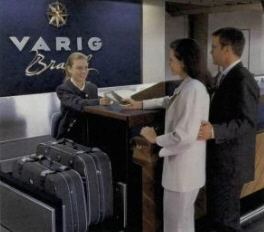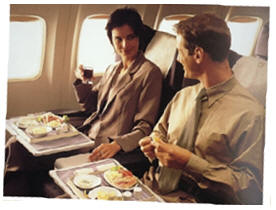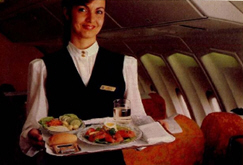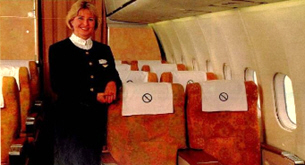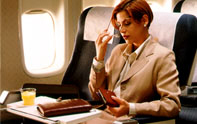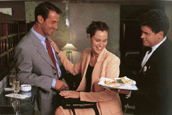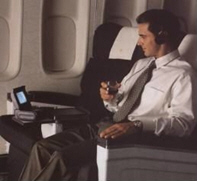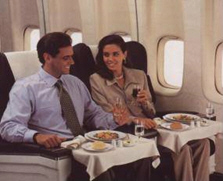|
|
20s | 30s | 40s | 50s | 60s | 70s | 80s | 90s | 2000s |
 |
|
|
||||||||||

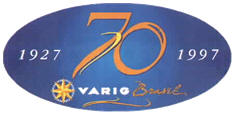
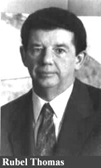

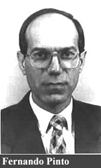
In April 1990, Rubel Thomas was elected VARIG’s president and need to face a difficult period that affected the entire industry. Nevertheless new international and domestic routes were created. In April 1995, Carlos W. Engels was elected as the new president. Another election brought select Fernando Abs Cruz da Souza Pinto as VARIG’s new president. He was the son of a former VARIG’s pilot and was Rio Sul’s president. Fernando Pinto assumed the presidency in January 1996.
VARIG entered in the 90s with the two biggest and most modern jets, MD -11 and Boeing 747-400, both arrived in 1991. VARIG was one of the firsts airlines in the world to operate the MD-11, which became the main aircraft for international flights. VARIG also expanded its international network after launch São Paulo - Johannesburg - Bangkok - Hong Kong route, in 1993. Besides that, VARIG also increased its presence in the USA with new flights to Orlando, Washington, Atlanta and Chicago.
In late 1991, Brazil's most famous route lost its most famous aircraft. In November, Boeing 737-300 began replacing the legendary Electra II on the busiest route in the country. The last regular flight took place on January 5, 1992, with a historic flight.
In 1994 VARIG launched its loyalty program, Smiles, which soon became the largest in Latin America. The following year, VARIG acquire 49% of the Uruguayan airline Pluna and Rio Sul purchase Nordeste regional airlines.
In 1996 VARIG launched a new logo, after more than forty years without any changes. The compass rose now are yellow and gold, and next to VARIG’s logo a stylized “Brasil” word. In September 1997, VARIG made the largest order in its history, a total of 24 aircraft with an option for another 15 aircraft for US$ 2.7 billion, which included Boeing 767-300ER and the new models Boeing 737-700, 737-800 and 777-200. At this time VARIG reached its record in seat offer, 41.05 million seats/kilometers offered in a year.
When celebrated its 70th anniversary, VARIG take another important step in its history when join Star Alliance, in November 1997, becoming part of a global network with high quality airlines, offering more than 10,000 daily flights to 124 countries. In 1998 VARIG was the first airline in Latin America to operate Boeing 737 Next Generation (B737-700).
The 1990s were marked by Brazilian air sector deregulation, culminating in lower fares and the entry of new competitors in the international market. As a result, VARIG's international network has been redesigned, cancelling deficient flights, such as routes for countries in Africa, Canada, Ecuador, Costa Rica and the Caribbean. The company's fleet was also rationalized with the withdrawal of Airbus A300 and Boeing 747-400 and the retirement acceleration of older models like Boeing 727 and DC-10. Another measure was the transfer of international flights to Guarulhos International Airport, in Sao Paulo. In the 1990s, routes used to start in Rio de Janeiro, but non-stop flights were now offered from Sao Paulo to all international destinations (for example: Rio de Janeiro - Sao Paulo - Paris - Sao Paulo - Rio de Janeiro).
The 1990s end saying goodby to Jumbo jet. On June 2, 1999 occurred VARIG's last flight with Boeing 747, after almost 20 years of service in the company's network. They were replaced by MD-11, smaller, more modern and economical.
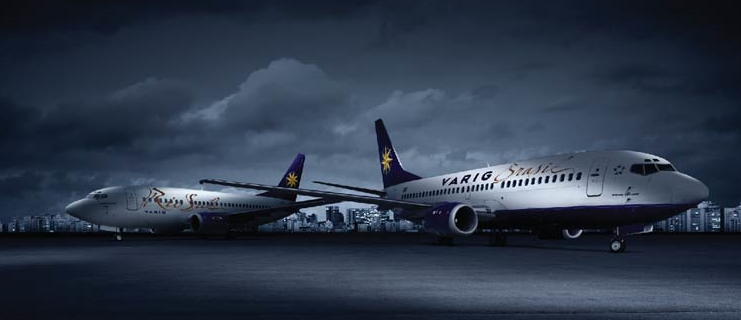

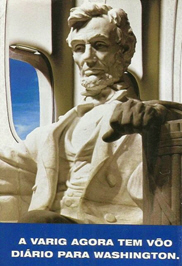

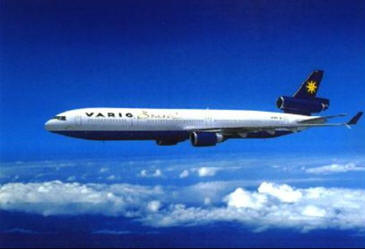

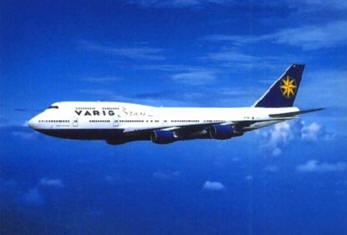

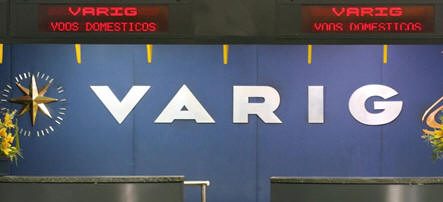



 |
|
HOW WAS FLYING IN THE 1990s?
Which was already happening
in the USA and Europe, began to appear more strongly in Brazil.
After the opening of Brazilian market, the Brazilians airlines saw
competition increases, prices fall and the load factor decline.
VARIG’s Economy Class offered more legroom, because its aircraft had fewer seats to give more comfort to passenger. VARIG also offered hot meals on domestic flights, accompanied by salad, bread, butter, fruit, dessert, gourmet chocolate and beverages such as water, juices, soft drinks, coconut water, mate, tea and coffee. On international flights there were two or three options of hot meal. On transoceanic flights, a Snak Bar and self-service were avaliable anytime during the flight. VARIG also offered to its passengers in any class, specials meals, special entertainment for children and babies kit.
VARIG’s Business Class offered more space and seats that recline up to 135 degrees. The on-board service included two entry options, four options of hot meal and dessert, fruits and cheeses. Drinks include Wines of the World program. Passengers also had individual video devices with 12 program options in seven languages. VARIG also had its own VIP rooms for first class and business class or Smiles diamond or gold card passengers. There passengers had access to computers, internet, telephone, fax and photocopy.
VARIG’s First Class offered personalized service as the hallmark. The service on board followed "Restaurant Style" philosophy, where the passenger chooses his favorite meal and when it should be served. The rare and unique Iranian Caviar was still part of VARIG’s First Class service. VARIG also had the wine-expert Danio Braga personally selecting the wines. The entertainment was offered in individual video devices, with twelve program options with six films in seven different languages. VARIG First also offer the “Comfort Station” with useful items which complemented the products in “nécessaire” and toilets.
|
|
90s |
||
|
Fleet evolution (VARIG Group):

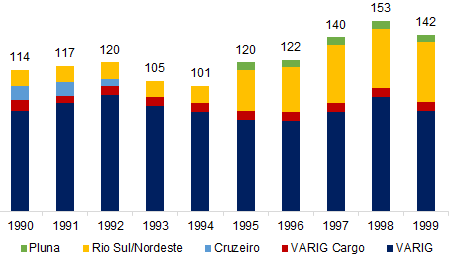
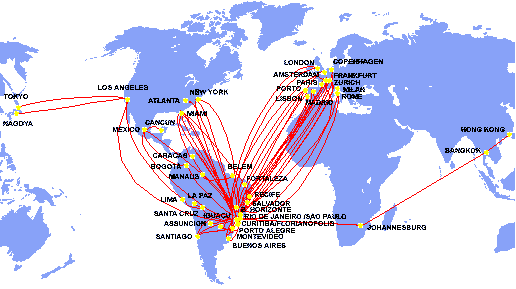


VARIG's international route map in 1997 / Business class on
domestic flights / Star Alliance airlines






